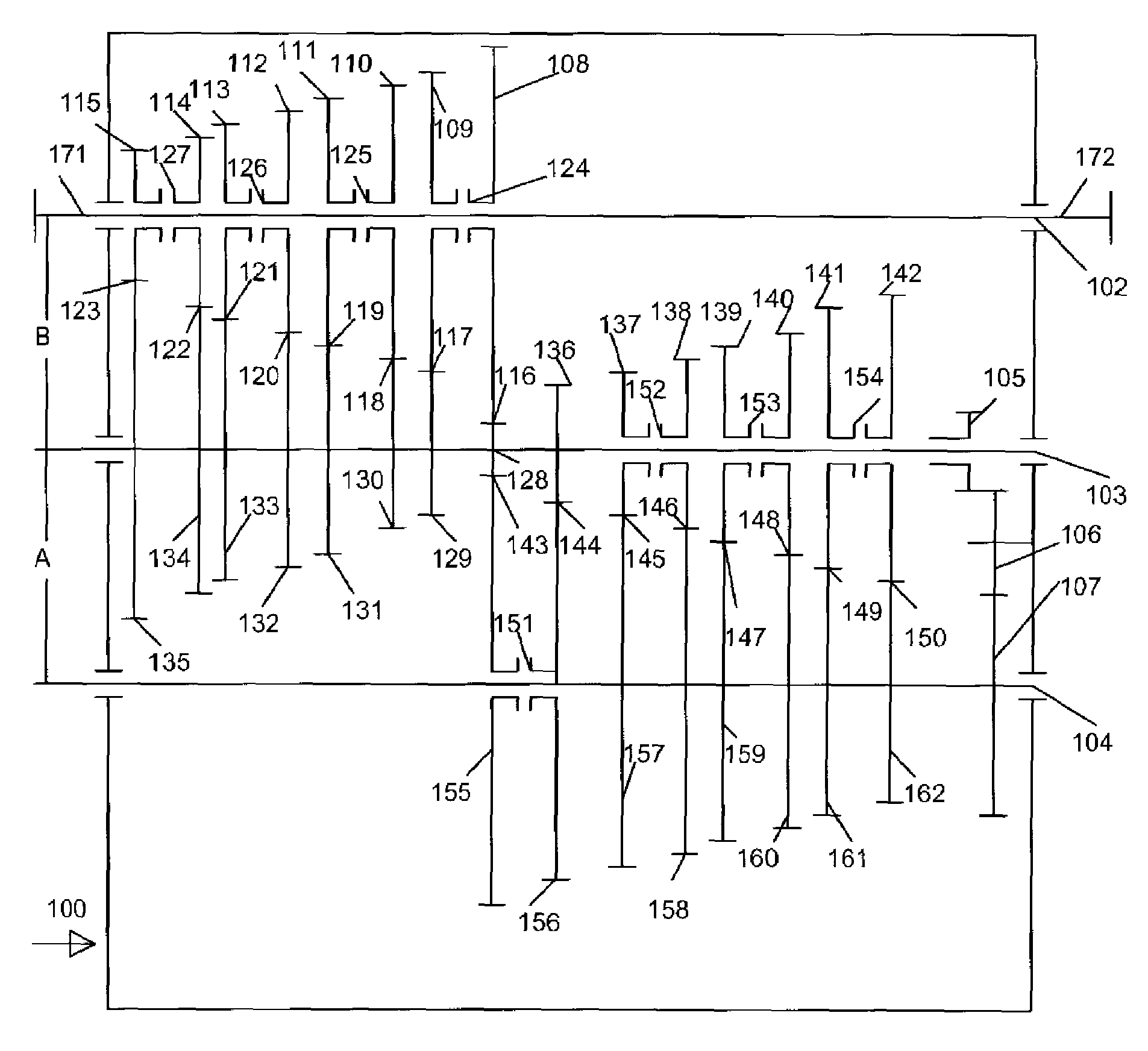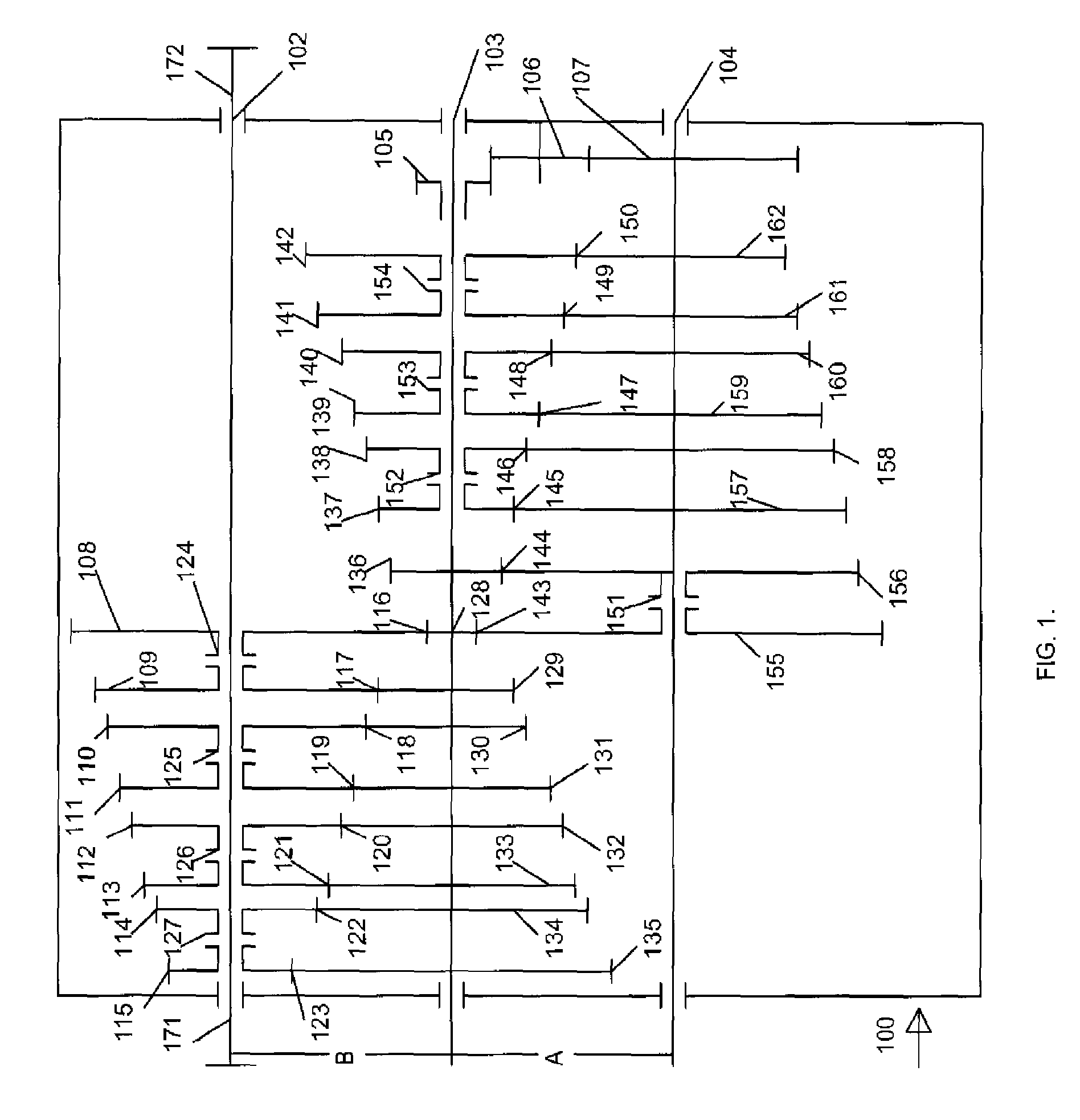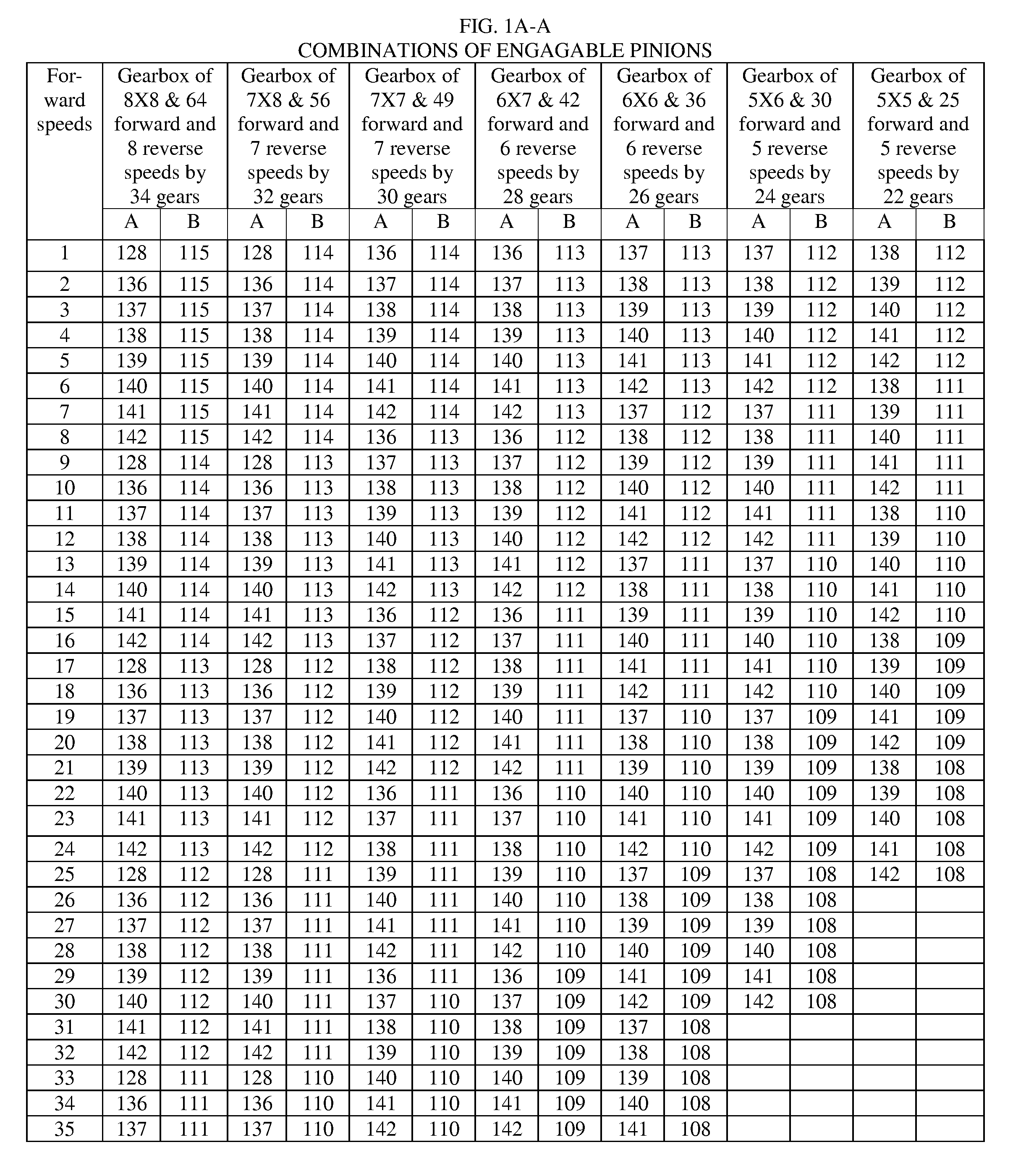Gear box apparatus
a gearbox and gearbox technology, applied in mechanical devices, transportation and packaging, gearboxes, etc., can solve the problems of inefficient gearboxes, high power consumption, and inability to provide additional directions for air transport vehicles, so as to reduce heat and power generated, reduce heat and power generation, and reduce the effect of momentum and engine or motor power
- Summary
- Abstract
- Description
- Claims
- Application Information
AI Technical Summary
Benefits of technology
Problems solved by technology
Method used
Image
Examples
first embodiment
[0087]In two designs in the same frame, members 101 shown in FIGS. 1 and 1C there are 64 and 65 gears of forward included 24 overdrive speeds and 8 and 16 reverse speeds. One design of range type has a mathematical gearbox formula 8×8 shown in FIG. 1. Other design of range-splitter type is compound MDUFEE gearbox family has a mathematical gearbox formula 8×8+1 shown in FIG. 1C.
[0088]Other difference is intermediate shaft 103 is second output shaft 103 of 16 reverse speeds connected to rear wheels. This provide to eliminate reverse mechanism comprising gears 105, 106, and 107 and to add one gear for forward speeds but to produce direct speed in addition than design shown in FIG. 1, which has described below.
[0089]A MDUFEE gearbox family 100 has frame members 101 supporting drive shaft 102, intermediate shaft 103 and output shaft 104 supported units A and B.
[0090]Power enters to left side of the MDUFEE gearbox family 100 on outward end 171 of the drive shaft 102 or on opposed outward ...
second embodiment
[0102]In the second embodiment, shown in FIG. 2, there are 96 gears of forward included 47 overdrive speeds and 24 reverse speeds available from MDUFEE gearbox family 200 having mathematical gearbox formula 4×4×6 in order. There are three units.
[0103]MDUFEE gearbox family 200 has frame members 201 supporting drive shaft 202, first intermediate shaft 203, second intermediate shaft 204 and output shaft 205.
[0104]Power may enter the MDUFEE gearbox family 200 on the left side on outward end 271 of the drive shaft 202 or on opposite outward end 272 if the drive shaft 202 in MDU gearbox 200 is turned around for using the opposed side of teeth on the gears. A drive shaft 202 supported two double synchronizer clutches 217 and 218 with pinions 209, 210, 211 and 212, which may be separately selected.
[0105]When pinions 209, 210, 211 or 212 is selected, it engages drive shaft 202, and engages and turns gears 219, 220, 221, 222, respectively, on first intermediate shaft 203 to form gearsets 213,...
third embodiment
[0117]In the third embodiment shown in FIG. 3 there are 108 forward and 27 reverse speeds included 36 overdrive forward and 9 overdrive reverse speeds. MDUFEE gearbox family 300 of mathematical gearbox formula 3×3×3×4 has frame members 301 supporting drive shaft 302, first intermediate shaft 303, second intermediate shaft 304, second intermediate shaft 305 and output shaft 306.
[0118]Power may enter the MDUFEE gearbox family 300 on the left side on outward end 371 of the drive shaft 302 or on opposite outward end 372 if the drive shaft 302 is turned around for using the opposed side of teeth on the gears. Power entering at outward end 371 enters single synchronizer clutch 317 with pinion 312 and double synchronizer clutch 316 have pinions 310 and 311 which may be separately selected.
[0119]When pinion 310 or 311 or 312 is selected, it engages drive shaft 302, and engages and turns gear 318 or 319 or 320, respectively, on first intermediate shaft 303 to form gearset 313 or 314 or 315, ...
PUM
 Login to View More
Login to View More Abstract
Description
Claims
Application Information
 Login to View More
Login to View More - R&D
- Intellectual Property
- Life Sciences
- Materials
- Tech Scout
- Unparalleled Data Quality
- Higher Quality Content
- 60% Fewer Hallucinations
Browse by: Latest US Patents, China's latest patents, Technical Efficacy Thesaurus, Application Domain, Technology Topic, Popular Technical Reports.
© 2025 PatSnap. All rights reserved.Legal|Privacy policy|Modern Slavery Act Transparency Statement|Sitemap|About US| Contact US: help@patsnap.com



